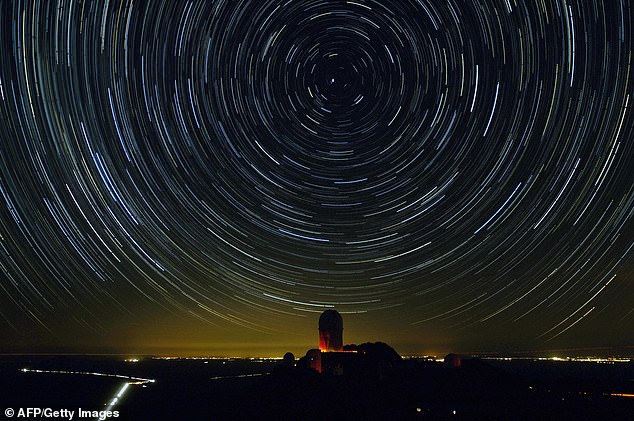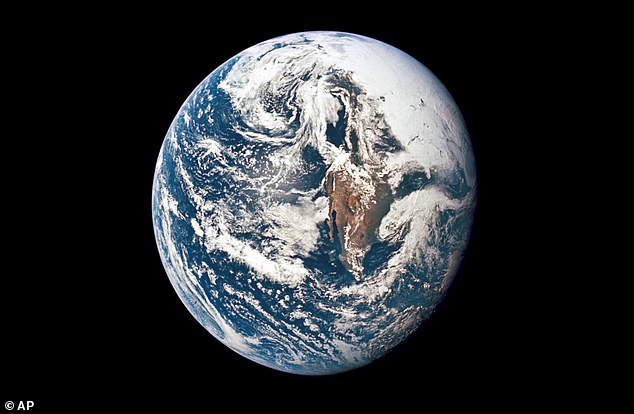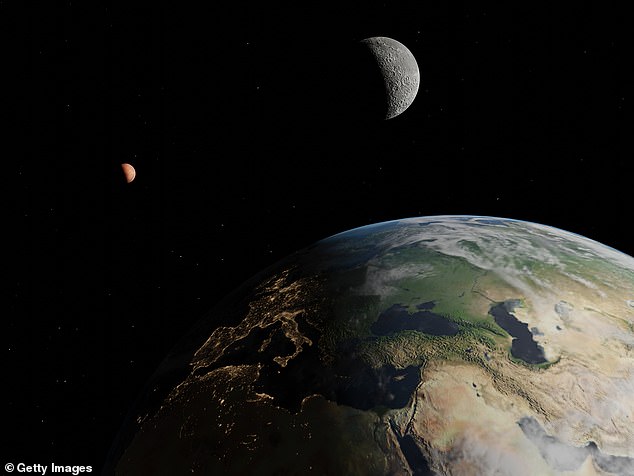Scientists have announced that tomorrow could be the shortest day of your life, breaking a mark that was just set two weeks ago.
That’s because Earth’s rotation has continued to pick up speed, and is expected to spin even faster than it did on July 9, when everyone on the plant experienced a day that was 1.3 milliseconds shorter than normal.
New data has revealed that the Earth appeared to have spun even faster a day later on July 10, making the day 1.36 milliseconds shorter than usual.
A millisecond equals one thousandth of a second, which is so impossibly difficult to measure that takes an atomic clock to track the numbers, measuring what’s called ‘Length of Day,’ or LOD.
LOD marks the time it takes Earth to rotate once, down to the millisecond. Normally, that process takes exactly 86,400 seconds, or 24 hours, to complete.
However, Earth’s rotation has been speeding up in recent years. While the cause is still a mystery, new research from NASA has suggested it may be connected to the moon’s gravitational pull.
The major uptick in speed this summer has led to the possibility that scientists will have to add a negative leap second to the calendar by 2029, meaning one second will be taken away from our clocks to keep them in sync.
While the tiny change may seem insignificant, researchers have found that the shorter day can affect everything from satellite systems and GPS accuracy to how we measure time itself.

Earth’s rotation has been speeding up, leading to some of the shortest days in history this month (Stock Image)

Earth normally takes 24 hours, or exactly 86,400 seconds, to complete one full rotation, which is called a solar day
Earth’s rotation is affected by a number of different factors, both on the planet and out in space.
Some of the potential reasons include changes in the atmosphere, the melting of glaciers worldwide shifting water volume, a change in motion inside the Earth’s metal core, and a weakening magnetic field.
NASA researchers have also suggested that this year’s acceleration is actually a result of Earth hitting the moon’s ‘orbital sweet spot,’ causing the planet to receive a tiny speed boost.
Before this recent acceleration in Earth’s spin, the planet was actually slowing down, due to the moon’s gravitational pull, which has been stretching our days into the 24-hour cycle we now live by in modern times.
Geoscientist Stephen Meyers, a professor at the University of Wisconsin-Madison, found that as the moon moves further away, its changing gravitational impact on Earth would slowly make days incrementally longer.
However, scientists recently observed variations in the planet’s rotation, causing the planet to speed up in 2020, 2022, and 2024.
On July 9 and now again on July 22, the moon will be at its furthest point from Earth’s equator, which alters its gravitational pull on our planet’s axis.
In simpler terms, the moon has been spinning the Earth like a top, holding on to the planet at the midpoint, which is usually closer to the moon than the north or south poles.

NASA researchers believe our moon’s gravitational pull has been one of the main drivers of this recent change in the spin of the planet
On July 22, and again on August 5, the moon’s gravity will exert more of a pull on the Earth’s poles, essentially spinning our planet at its top, which naturally makes it rotate faster.
The fastest day recorded so far was just over one year ago on July 5, 2024, when Earth spun 1.66 milliseconds faster than the standard 24 hours.
Although scientists have been recording Earth’s rotation since the 1970s, they only started noticing record-breaking changes on a regular basis in 2020.
That year, July 19 came in 1.47 milliseconds short. On July 9, 2021, there was another 1.47 millisecond drop.
In 2022, Earth recorded its shortest day on June 30, shaving off 1.59 milliseconds from the usual 24 hours.
In 2023, the planet’s rotation slowed again, and no new records were set. In 2024, however, the speed picked up. Several days broke the previous records, making it the year with the most consistently shorter days on record.
These estimates are based on past observations and computer models, and include systematic corrections and smoothing to account for natural fluctuations.
Right now, the world has kept time using Coordinated Universal Time, or UTC. Sometimes we’ve added a leap second to stay in sync with Earth’s slow shifts.
Due to these ongoing spikes in our rotation, however, the International Earth Rotation and Reference Systems Service (IERS) has already announced that no leap second will be added in 2025.












